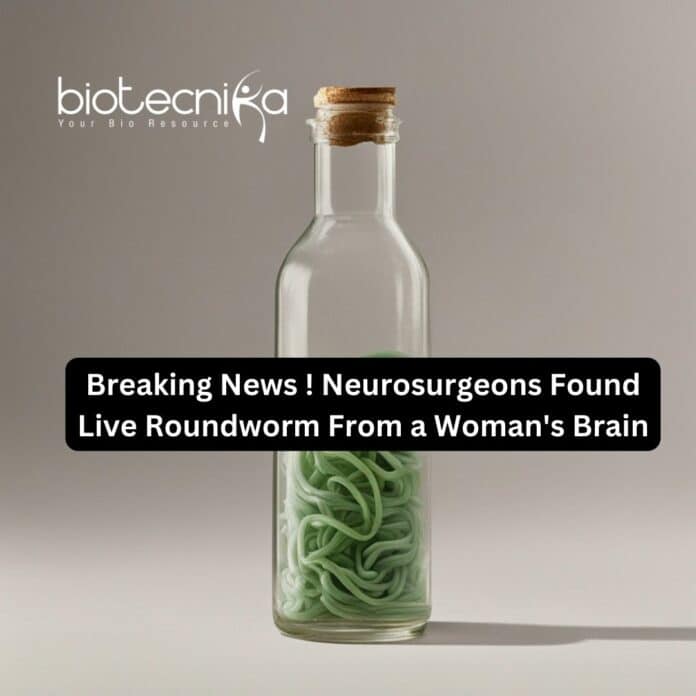Live Roundworm During a surgical procedure at Canberra Hospital in Australia, a group of neurosurgeons were met with an astonishing discovery that left them in awe. While performing open-brain surgery on a 64-year-old woman, the medical team encountered an elongated, string-like structure within a lesion affecting the woman’s right frontal lobe. Upon its removal, their surprise escalated when they realized the structure was a live, wriggling roundworm.
The lead surgeon, Hari Priya Bandi, was taken aback and expressed a mixture of amazement and disbelief, sharing her astonishment with infectious disease specialist Sanjaya Senanayake, saying, “Oh my god, you wouldn’t believe what I just found in this lady’s brain.” While instances of parasitic worms inhabiting human brains have been previously documented, this specific type of nematode presented a remarkable case, previously unrecorded in the annals of medical literature. Collaborative efforts between experts from The Australian National University (ANU) and Canberra Hospital were initiated to uncover the origins of this unprecedented intruder.
Eventually, the enigma was solved by researchers associated with Australia’s Commonwealth Scientific and Industrial Research Organisation (CSIRO). The extracted parasite from the woman’s brain was identified as Ophidascaris robertsi, a roundworm commonly found within the digestive systems of carpet pythons. Dr. Sanjaya Senanayake commented, “This marks the first-ever documented case of Ophidascaris within a human.”
Although instances of this parasite in juvenile form have been found in the organs of koalas and sugar gliders, this discovery signifies the inaugural encounter of a fully mature adult roundworm within a mammalian brain.
The life cycle of the parasite initiates as a larva residing in the organs of small mammals, which carpet pythons subsequently consume. The worm reaches maturity within the snake’s esophagus and stomach. Intriguingly, despite the patient’s lack of direct interaction with carpet pythons, she frequented a lake near her residence in southeastern New South Wales. Researchers speculate that contact with contaminated grass near the lake might have led to the parasite’s larvae infecting her.
The patient’s symptoms included abdominal pain, diarrhea, fever, cough, and breathlessness, ultimately resulting in a diagnosis. Curiously, the minuscule size of the roundworm larvae posed a challenge in their initial detection. Clinical microbiologist Karina Kennedy likened the endeavor of finding them to “identifying a needle in a haystack.”
Live Roundworm




